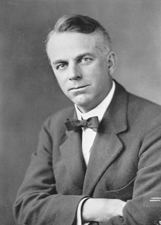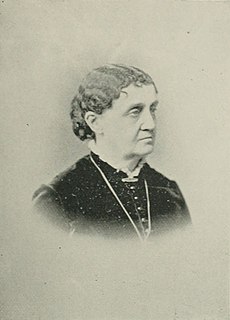Related Research Articles

The temperance movement is a social movement against the consumption of alcoholic beverages. Participants in the movement typically criticize alcohol intoxication or promote complete abstinence from alcohol (teetotalism), and its leaders emphasize alcohol's negative effects on people's health, personalities and family lives. Typically the movement promotes alcohol education and it also demands the passage of new laws against the sale of alcohol, either regulations on the availability of alcohol, or the complete prohibition of it. During the 19th and early 20th centuries, the temperance movement became prominent in many countries, particularly in English-speaking, Scandinavian, and majority Protestant ones, and it eventually led to national prohibitions in Canada, in Norway and in the United States, as well as provincial prohibition in India. A number of temperance organizations exist that promote temperance and teetotalism as a virtue.
The Woman's Christian Temperance Union (WCTU) is an active international temperance organization that was among the first organizations of women devoted to social reform with a program that "linked the religious and the secular through concerted and far-reaching reform strategies based on applied Christianity." It plays an influential role in the temperance movement. The organization supported the 18th Amendment and was also influential in social reform issues that came to prominence in the progressive era.

The Prohibition Party (PRO) is a political party in the United States known for its historic opposition to the sale or consumption of alcoholic beverages and as an integral part of the temperance movement. It is the oldest existing third party in the United States and the third-longest active party.

William Squire Kenyon was a United States Senator from Iowa, and a United States Circuit Judge of the United States Court of Appeals for the Eighth Circuit.

Mary Hunt was an American activist in the United States temperance movement promoting total abstinence and prohibition of alcohol. She gained the power to accept or reject children's textbooks based on their representation of her views of the danger of alcohol. On her death there were questions asked regarding the finances of the organisation.
The repeal of Prohibition in the United States was accomplished with the passage of the Twenty-first Amendment to the United States Constitution on December 5, 1933.

Marie Caroline Brehm was an American prohibitionist, suffragist, and politician. The Head of the suffrage department for the Woman's Christian Temperance Union (WCTU), she was a key figure in the Prohibition Party and Presbyterian Church, active in both local and national politics, and an advocate of reform laws. Twice she was appointed by the President to represent the United States at the World's Anti-Alcoholic Congress in Europe. Additionally, she was the first woman to run for the Vice President of the United States after the 19th amendment granted women the right to vote.

Martha McClellan Brown was a lecturer, educator, reformer, newspaper editor, and major leader in the temperance movement in Ohio.
The Federal Council of Churches, officially the Federal Council of Churches of Christ in America, was an ecumenical association of Christian denominations in the United States in the early twentieth century. It represented the Anglican, Baptist, Eastern Orthodox, Lutheran, Methodist, Moravian, Oriental Orthodox, Polish National Catholic, Presbyterian, and Reformed traditions of Christianity. It merged with other ecumenical bodies in 1950 to form the present day National Council of Churches.
The Committee of Fifty was formed in 1893 by a group of American businessmen and scholars to investigate problems associated with the use and abuse of alcoholic beverages. The committee was chaired by prominent New York City lawyer Joseph Larocque, and included figures such as the leading physiologist of the time, Harvard's Henry Pickering Bowditch, and educator, Progressive reformer, and future mayor of New York City, Seth Low.

The Temperance movement in the United States is a movement to curb the consumption of alcohol. It had a large influence on American politics and American society in the nineteenth and twentieth centuries, culminating in the unsuccessful prohibition of alcohol, through the Eighteenth Amendment to the United States Constitution, from 1920 to 1933. Today, there are organizations that continue to promote the cause of temperance.

The temperance movement in New Zealand originated as a social movement in the late-19th century. In general, the temperance movement aims at curbing the consumption of alcohol. Although it met with local success, it narrowly failed to impose national prohibition on a number of occasions in the early-20th century. Temperance organisations remain active in New Zealand today.

Cornelia Hatcher (1867–1953) was an American suffragist and temperance activist. In 2009, Hatcher was named to the Alaska Women's Hall of Fame.

The Woman's Christian Temperance Union Administration Building is a historic building in Evanston, Illinois, United States. It has served as the publishing house and national headquarters of the Woman's Christian Temperance Union since its construction in 1910. The organization had an important role in the national discussion on prohibition and women's suffrage.

Harriet Newell Kneeland Goff was an American temperance reformer and author. For many years, she was a contributor to the public press, and three books followed, Was it an Inheritance? (1876), Other Fools and Their Doings, Or, Life Among the Freedmen (1880), and Who Cares (1887). She was elected Right Worthy Grand Vice-Templar of the British branch in the rupture of the International Organisation of Good Templars, an international temperance lecturer beginning in 1870, and her six years, her especial work was for the employment of police matrons in Brooklyn, New York. Goff was the first woman ever placed upon a nominating committee to name candidates for the presidency and vice-presidency of the United States. She died in 1901.
The temperance movement in India aims at curbing the use of alcohol in that country. In some places, the temperance movement has led to alcohol prohibition in India, with many temperance organisations continuing their work today.

Emily Pitts Stevens was an American educator, temperance activist, and early San Francisco suffragist. She was the editor and publisher of The Pioneer, the first women’s suffrage journal in the West Coast of the United States, and was a co-founder of the California Woman Suffrage Association. In addition, she was a businesswoman, teacher, administrator, lecturer, and a founder of women's organizations. In San Francisco, Stevens started an evening school for working girls, and instituted the Seaman's League. After the organization of the Woman's Christian Temperance Union (WCTU) in California, she labored on its behalf. She also contributed to the columns of various newspapers, and lectured. Stevens died in 1906.

Women's Christian Temperance Union of New Zealand is a non-partisan, non-denominational, and non-profit organization that is the oldest continuously active national organisation of women in New Zealand. The national organization began in 1885 during the visit to New Zealand by Mary Clement Leavitt, the first world missionary for the Woman's Christian Temperance Union. The WCTU NZ was an early branch of the World Woman's Christian Temperance Union and a founding affiliate of the National Council of Women of New Zealand. Men may join the WCTU NZ as honorary members.
Elizabeth Laurie Rees (1885–1971), known as "Bessie", was an English-born Australian temperance and women's rights activist. She was a key leader in the Women's Christian Temperance Union of Victoria, serving twenty years as the general secretary. She also served in a variety of leadership roles for the national Australian WCTU, including treasurer, corresponding secretary, and national president. She was the inaugural editor of the national WCTU magazine, White Ribbon Signal. A devoted Baptist, she helped launch the Victorian Baptist Women's Association with Cecilia Downing in 1925. In 1928, as president of the Victorian Baptist Women's Association, she attended the World Baptist Congress in Toronto, Canada, and was the only woman to lead devotions at the event. In 1935, Rees was awarded the King George V Silver Jubilee Medal for her work on temperance.
References
- 1 2 The New York Templar. 1925. p. 6.
The National Temperance council was organized in Columbus, Ohio, in 1913, under the name of "Council of One Hundred", for the purpose of promoting temperance education...
- ↑ Hearings Before the Committee on Armed Services, United States Senate, Eighty-Fourth Congress, First Session on H.R. 7000L An Act to Provide for Strengthening of the Reserve Forces, and for Other Purposes. United States Congress Senate Committee on Armed Services. 1955. p. 153.
- ↑ "The Tide is Turning: NTPC Sees Dry Crackdown". The Union Signal: A Journal of Social Welfare . National Woman's Christian Temperance Union. 97: 6. 1971.